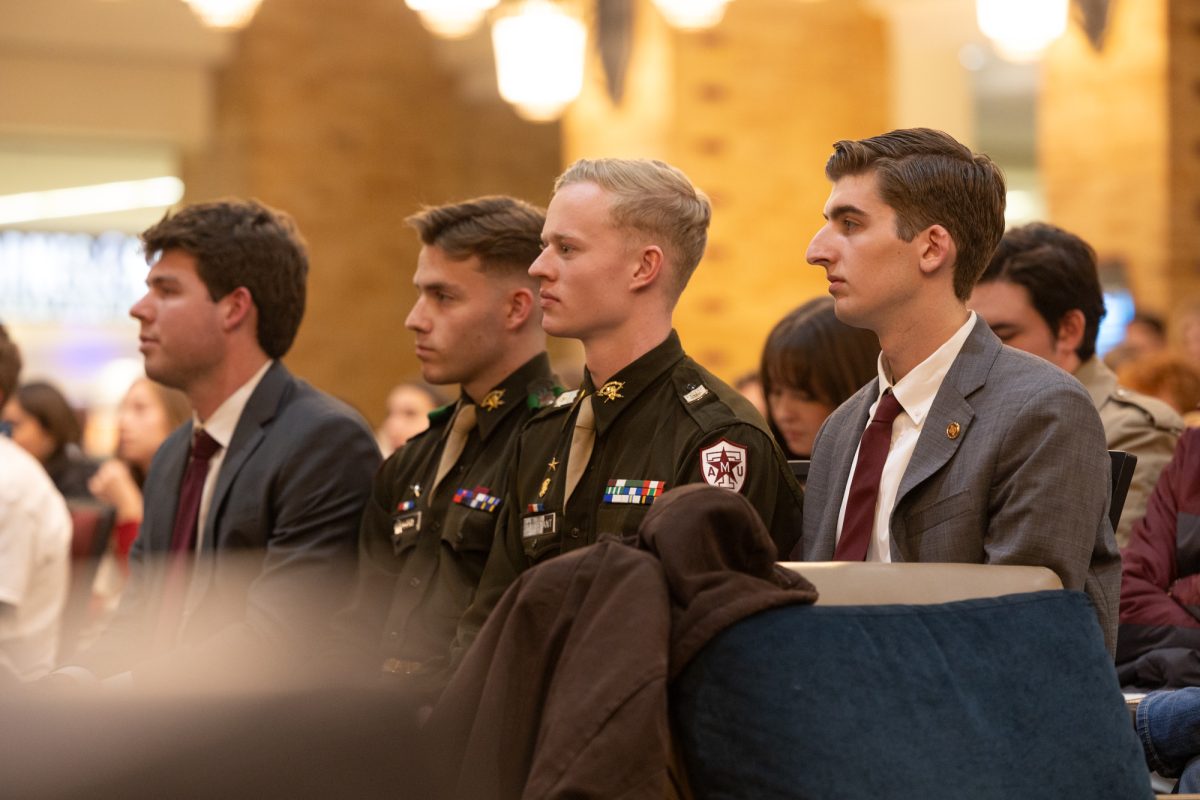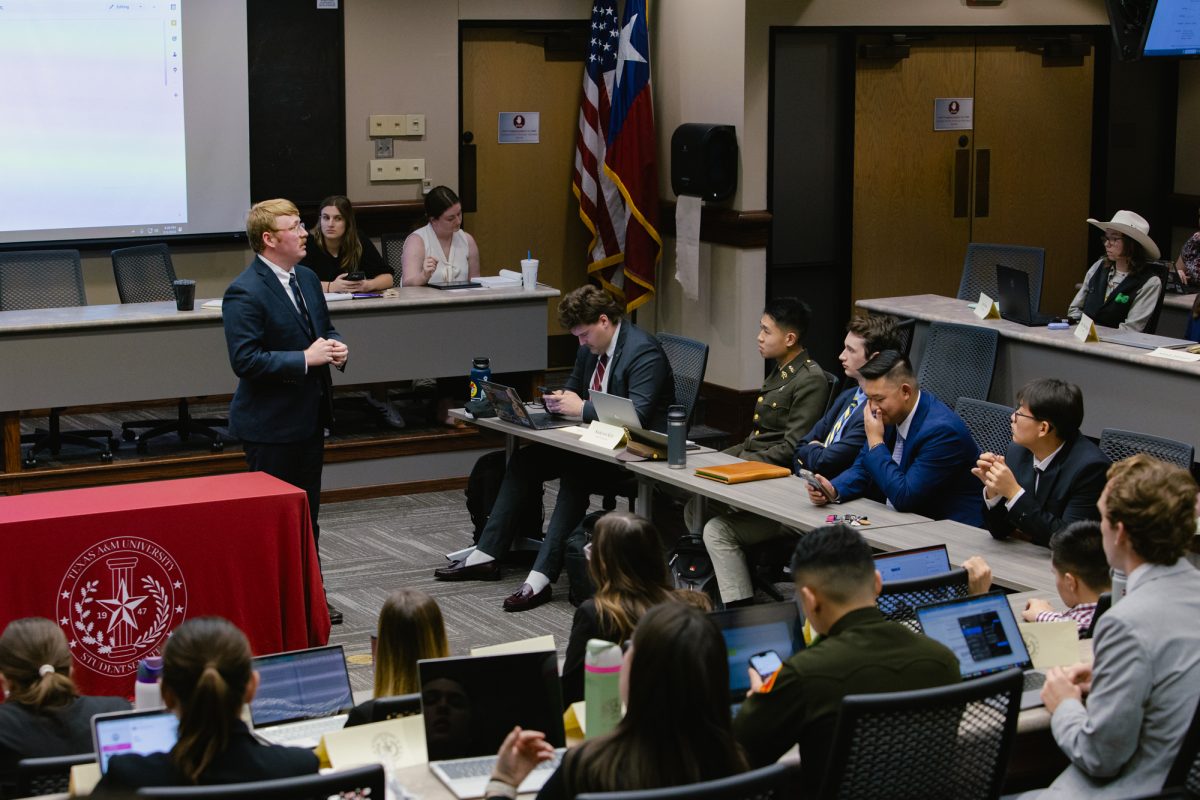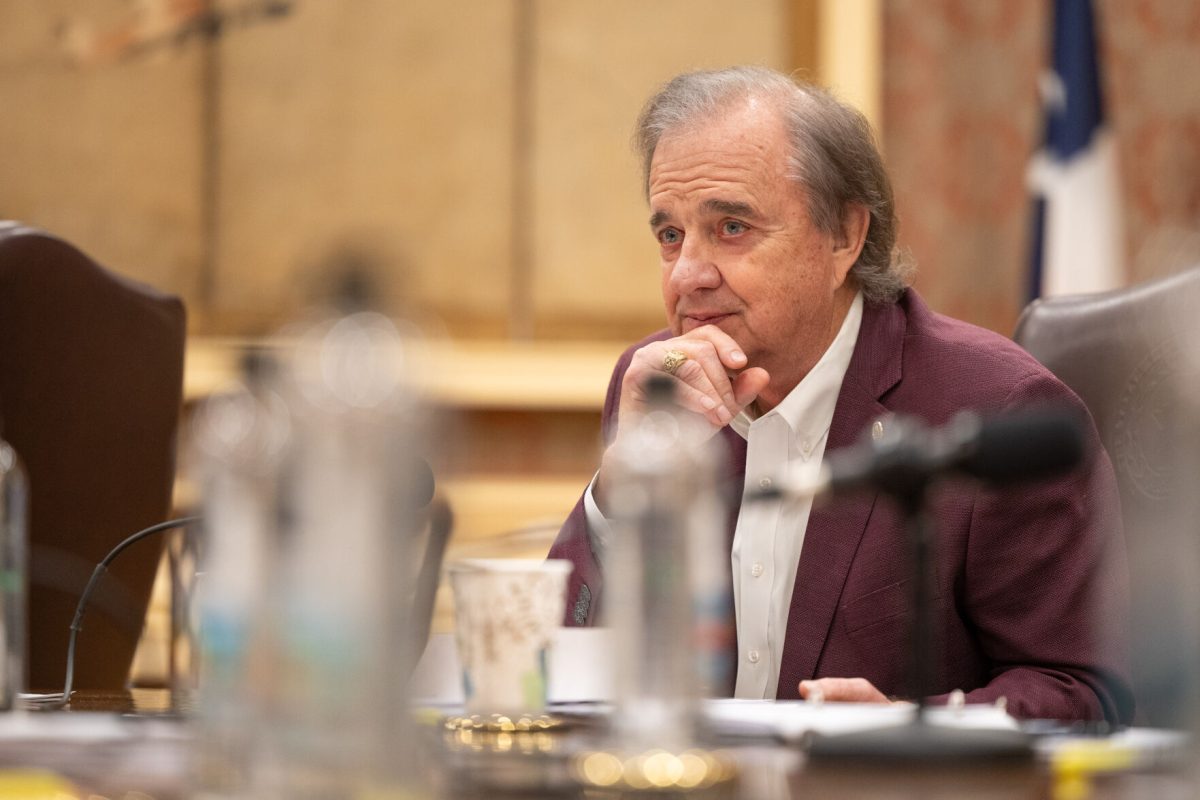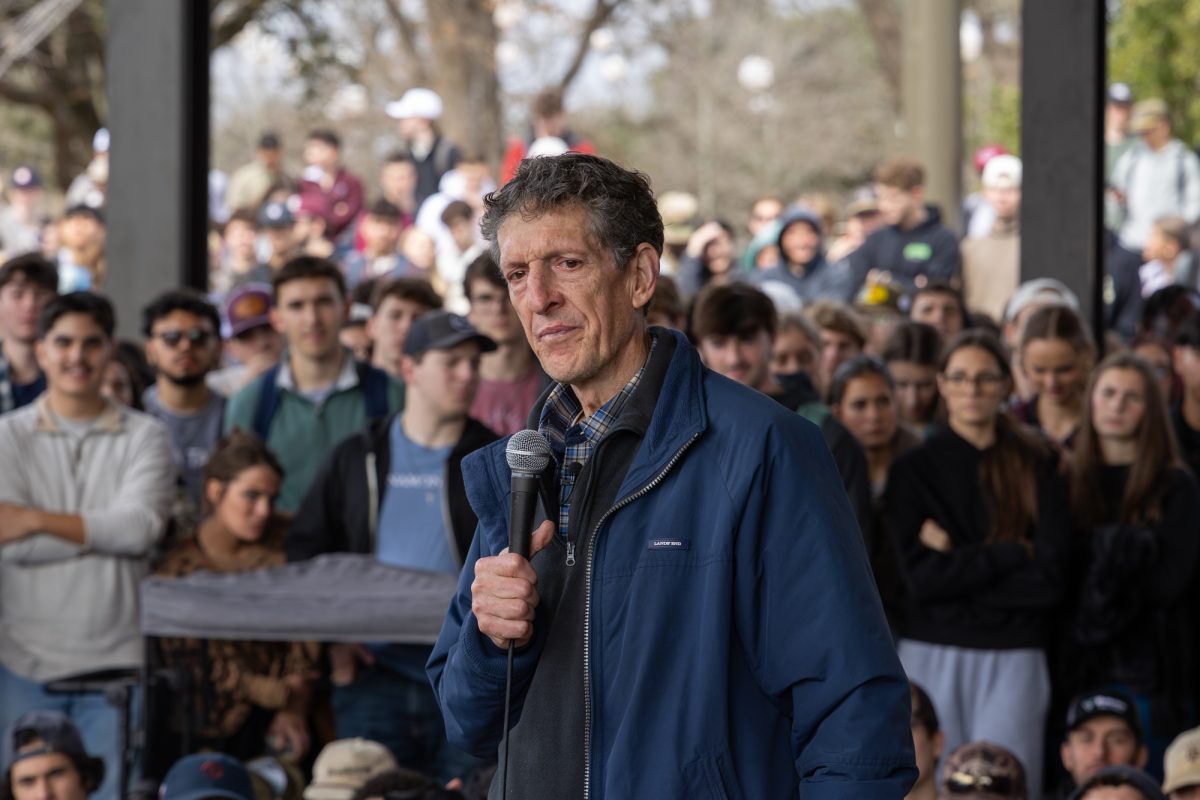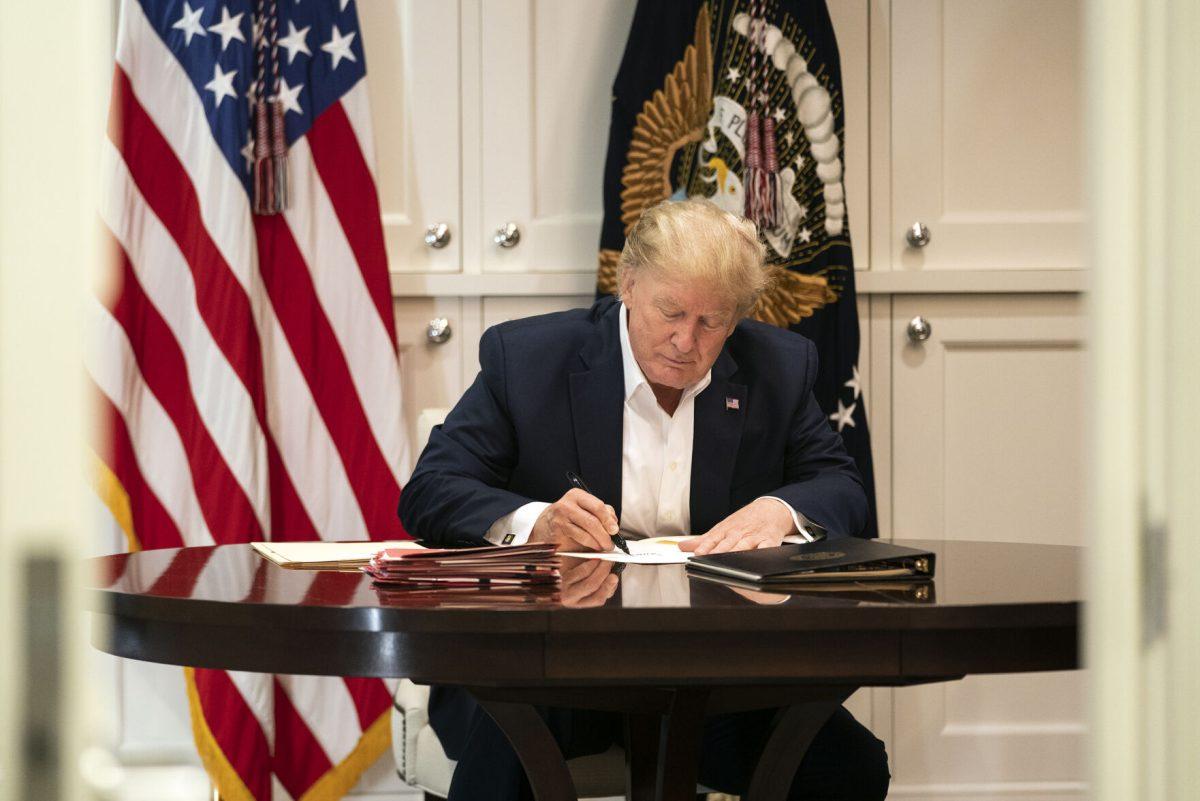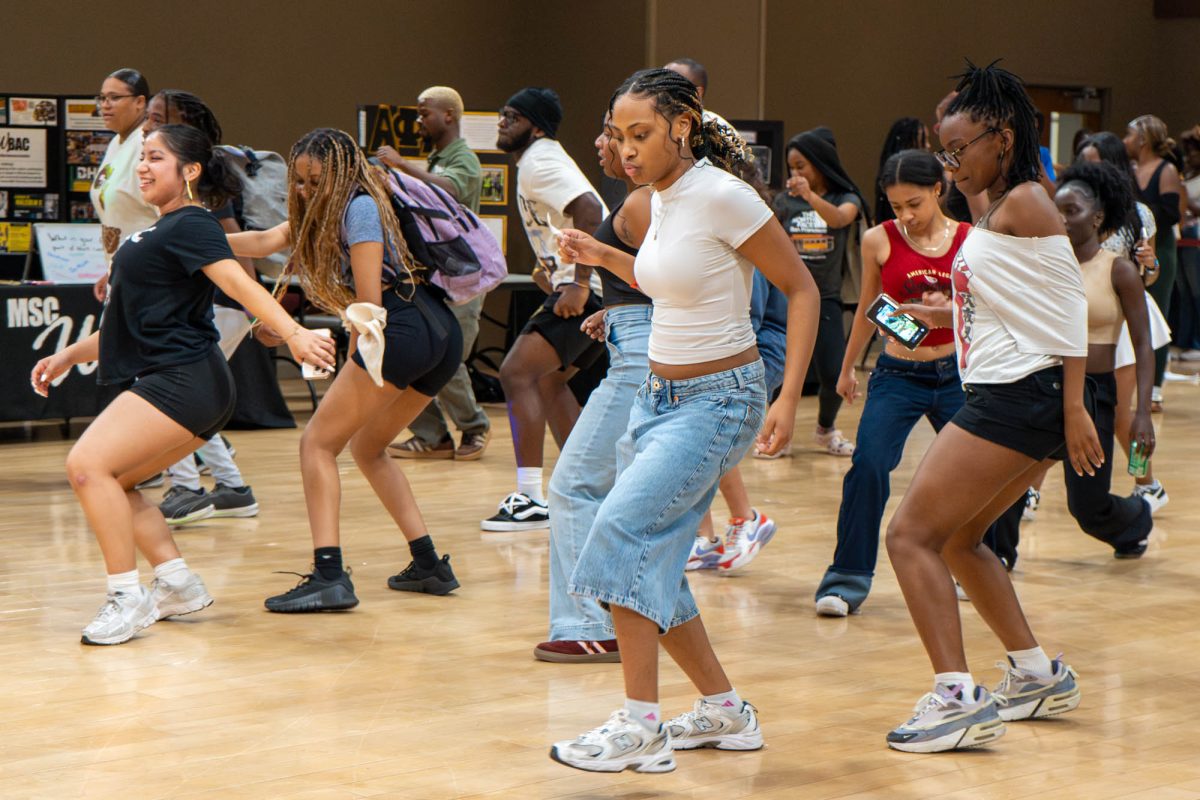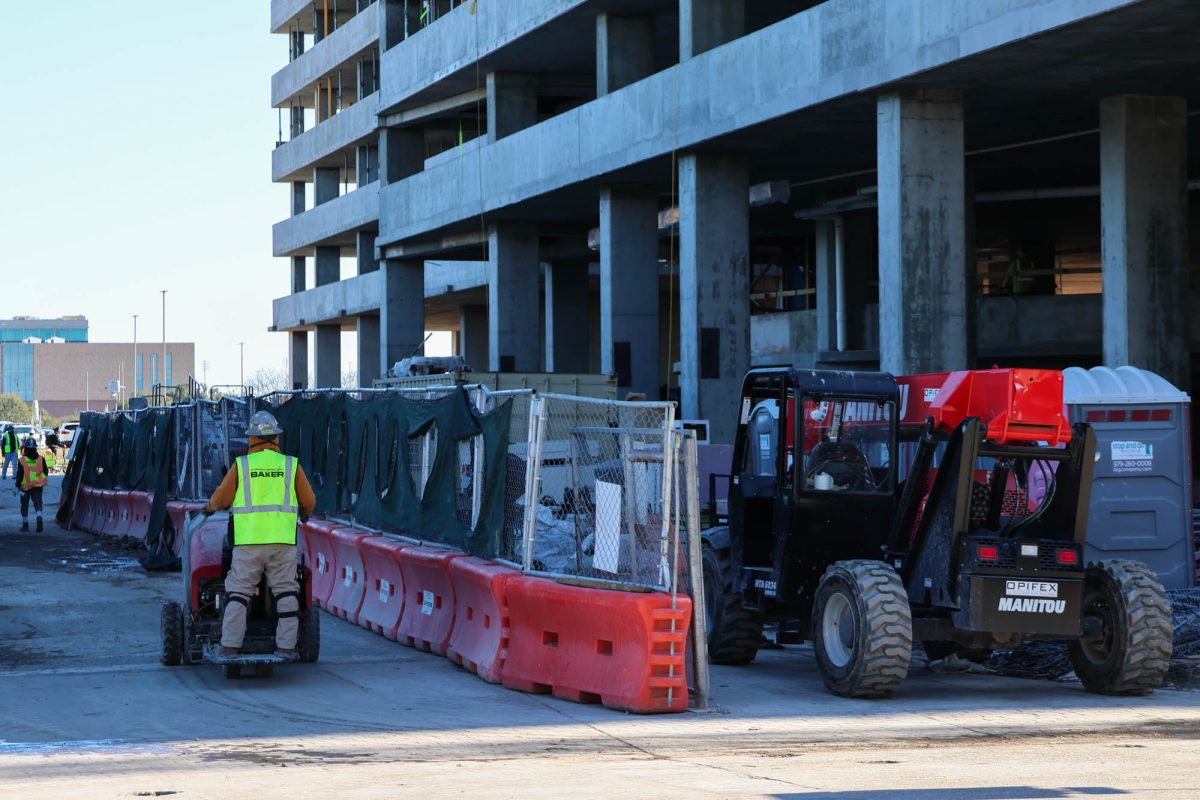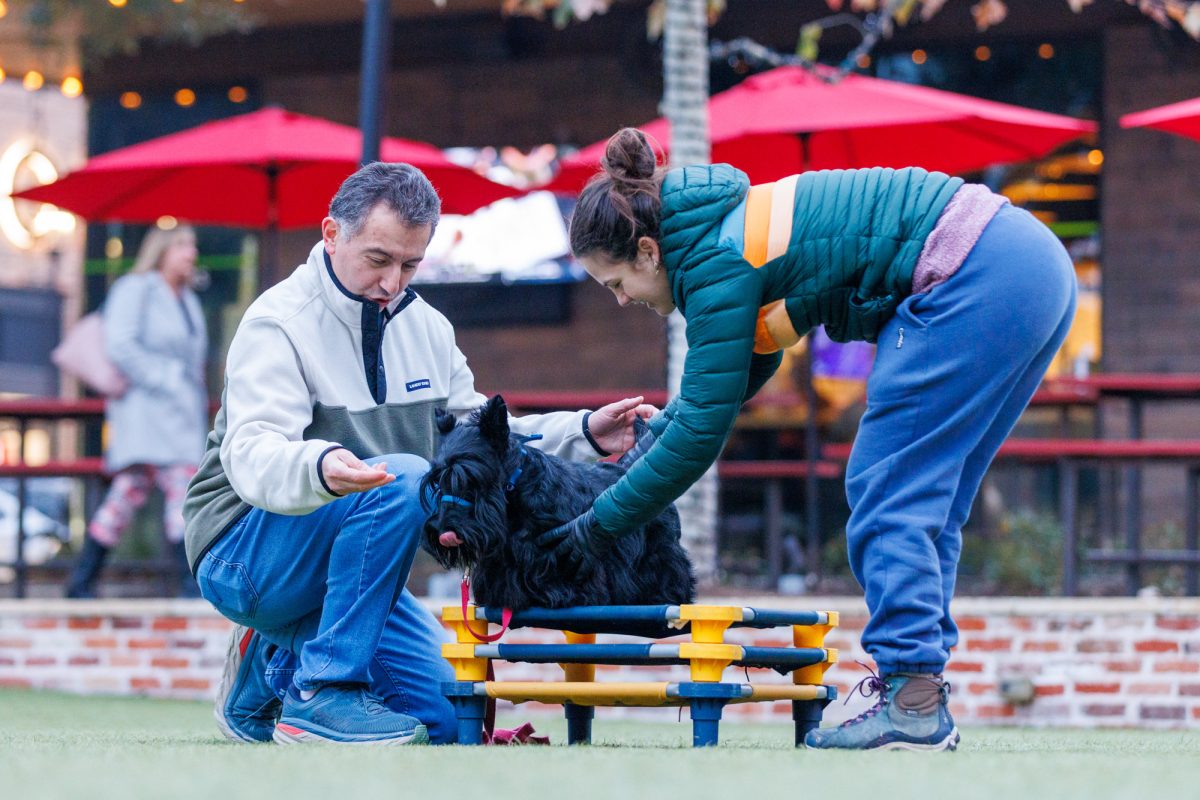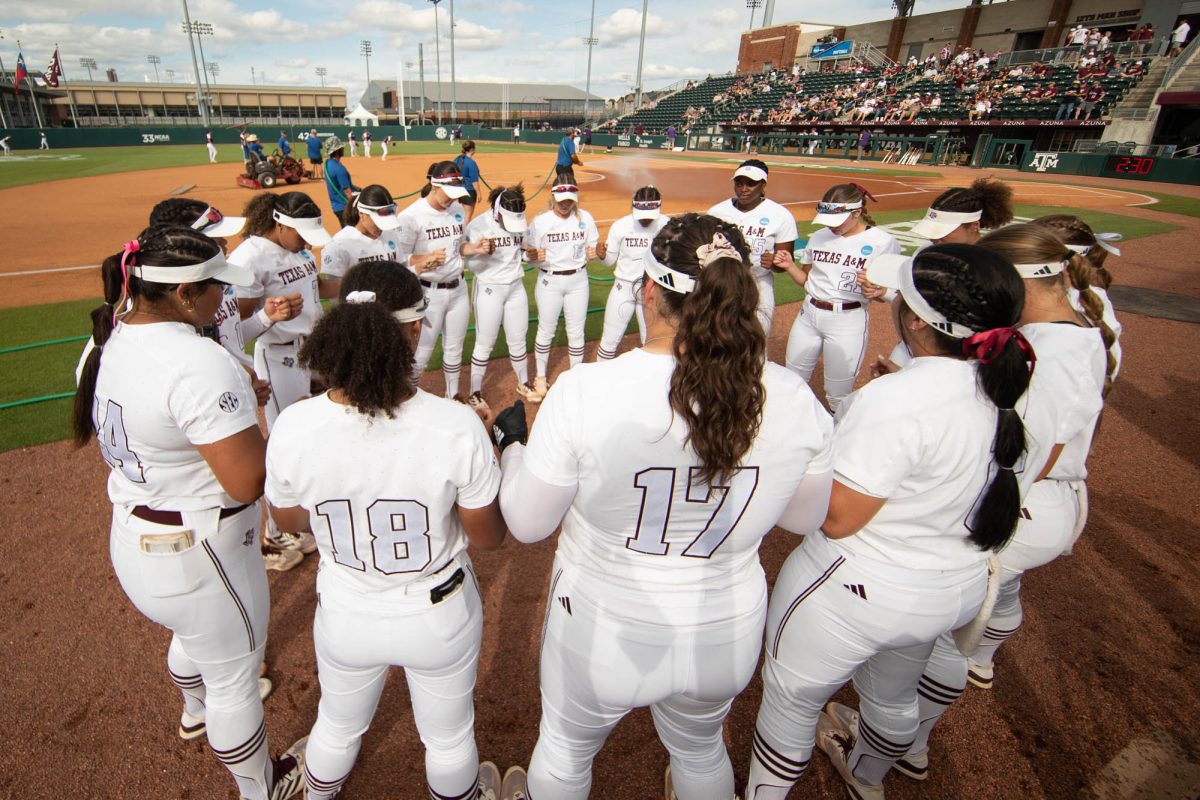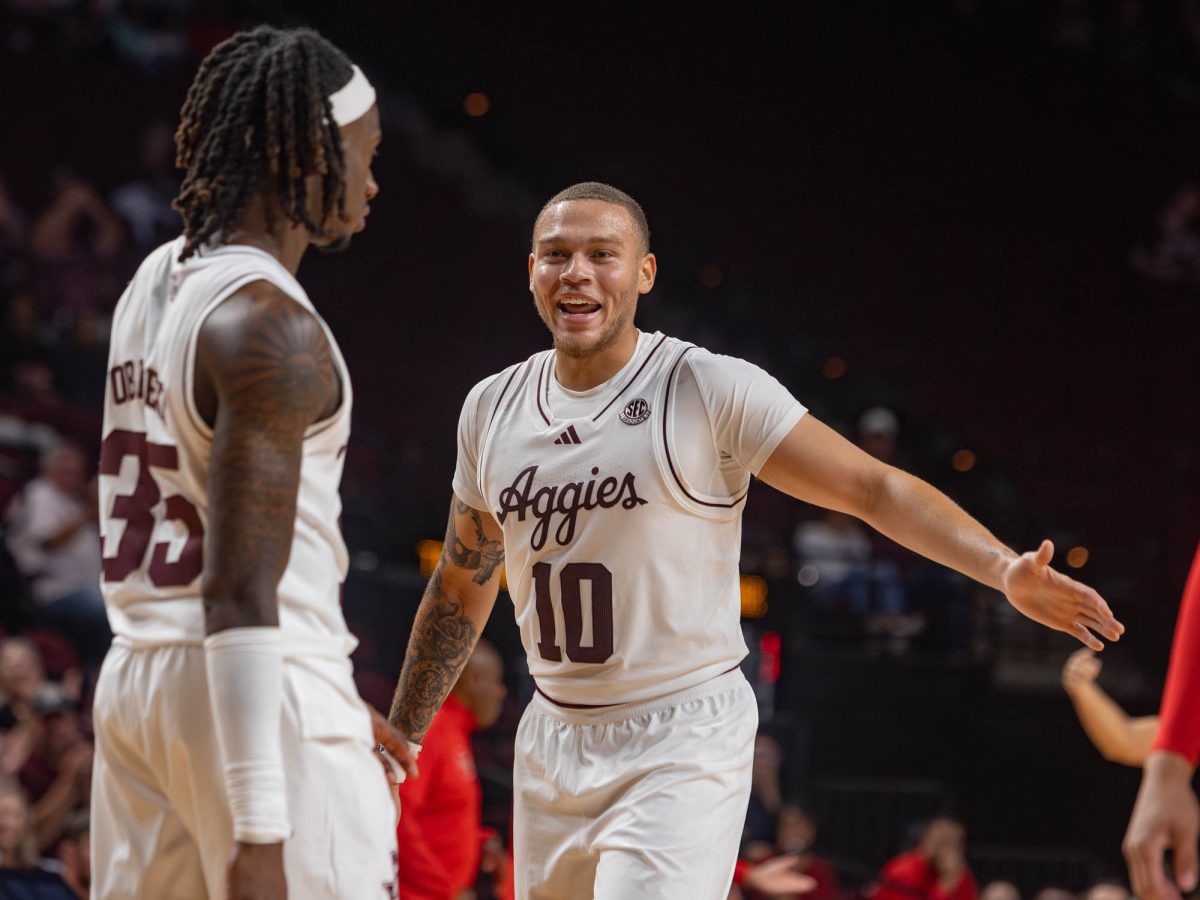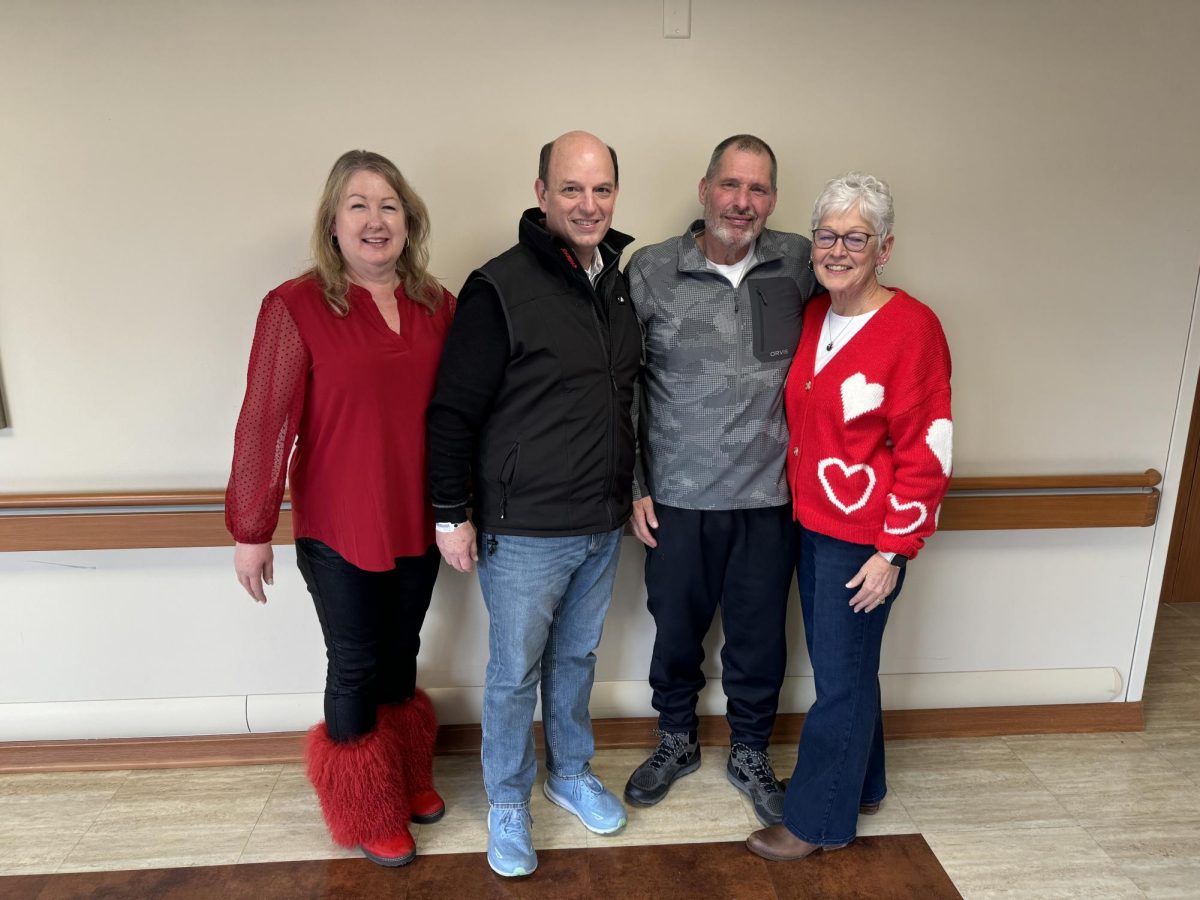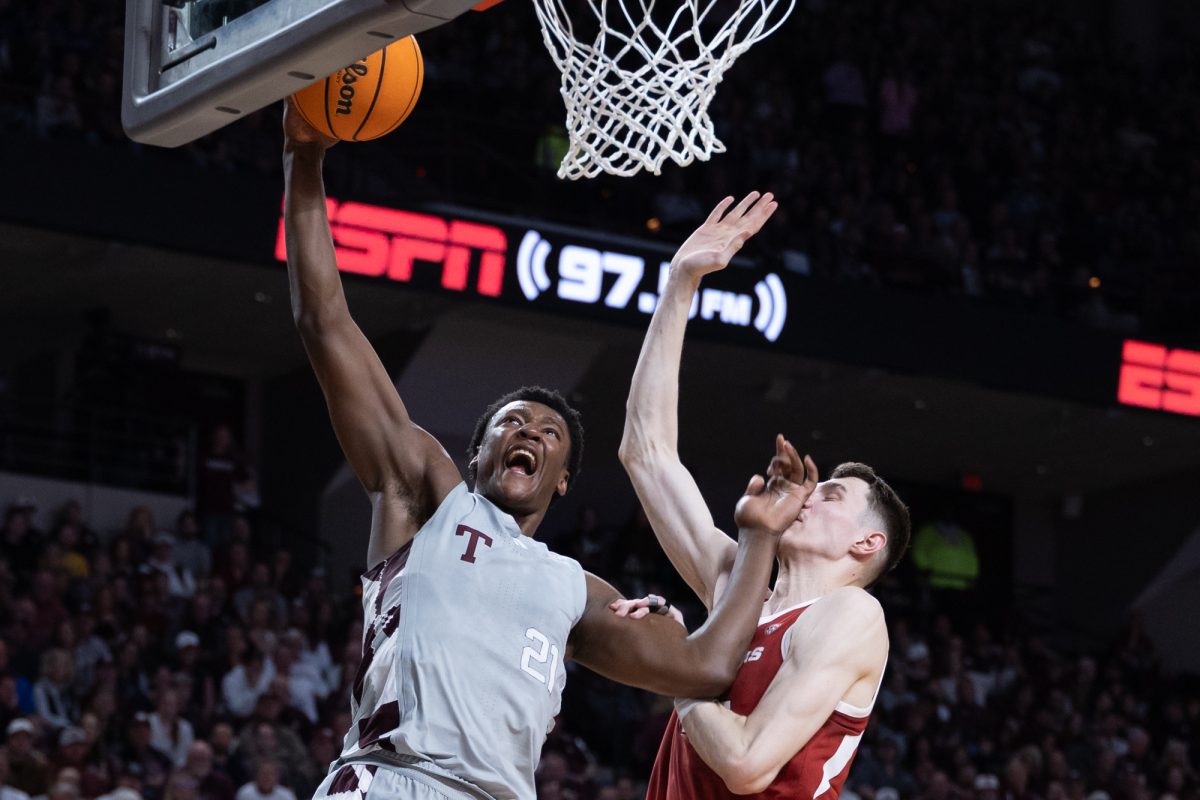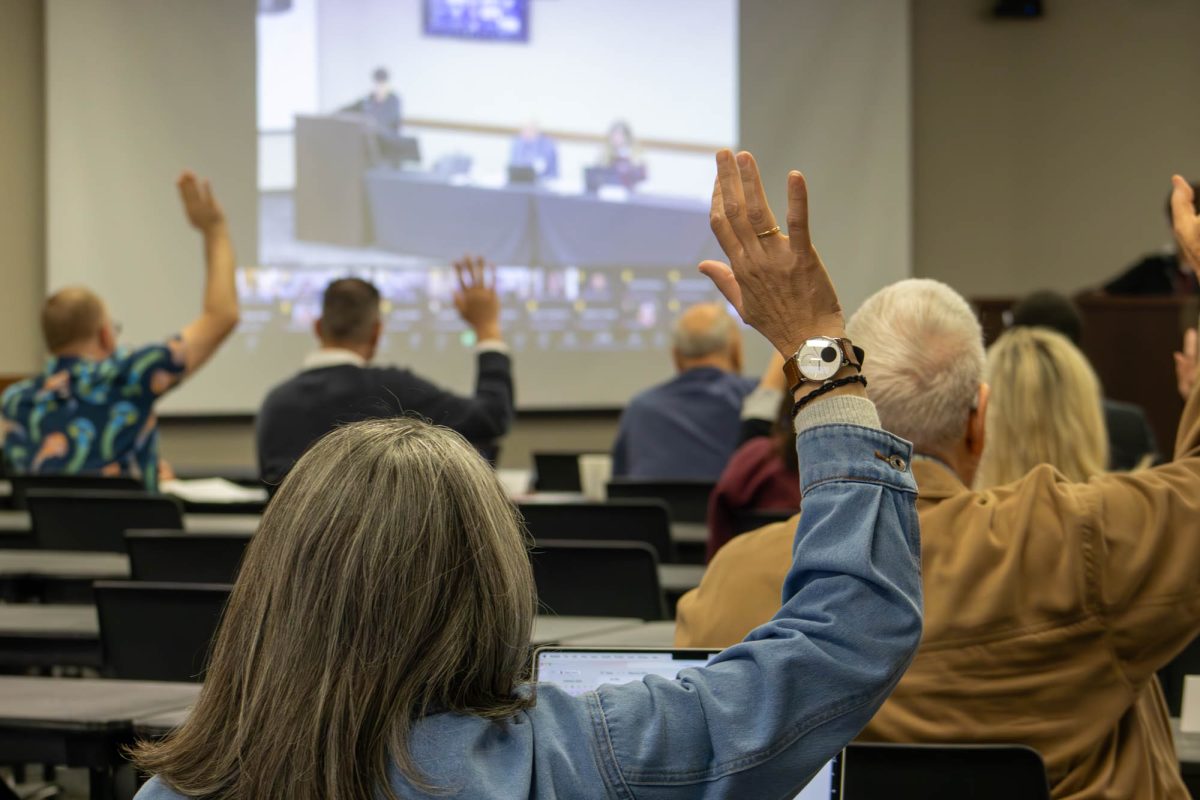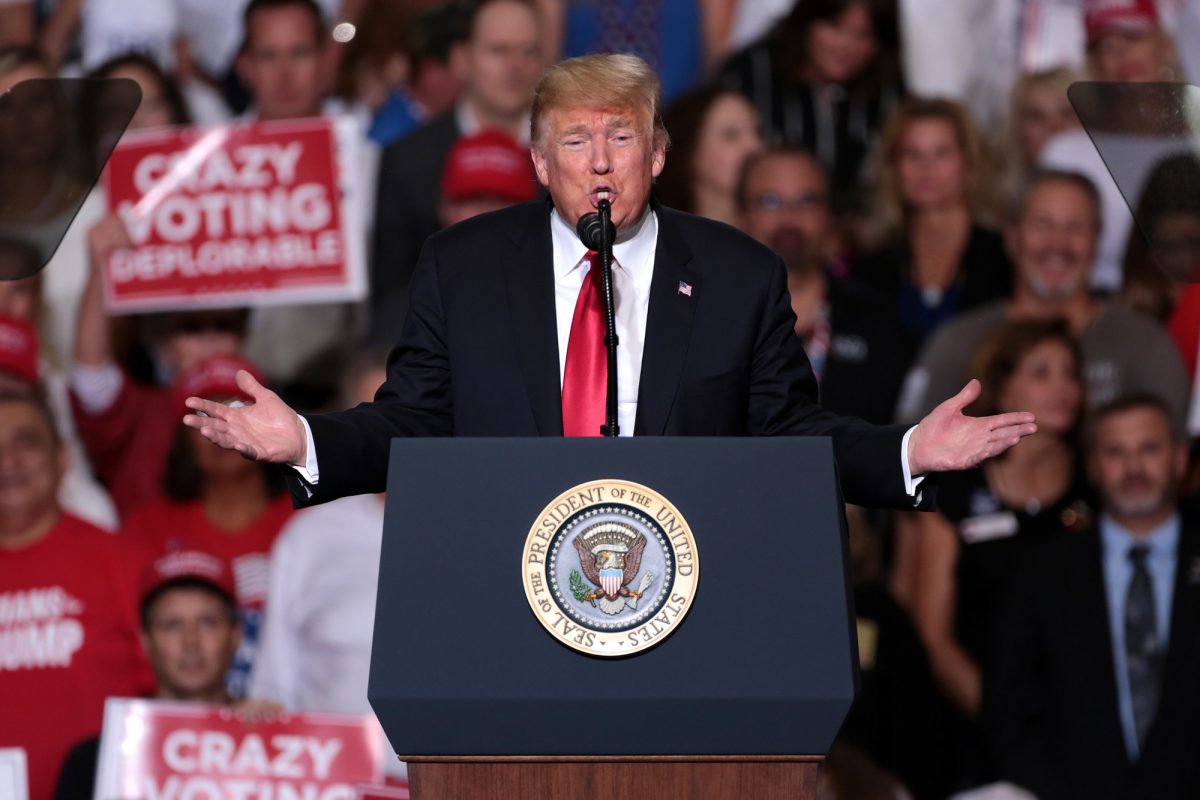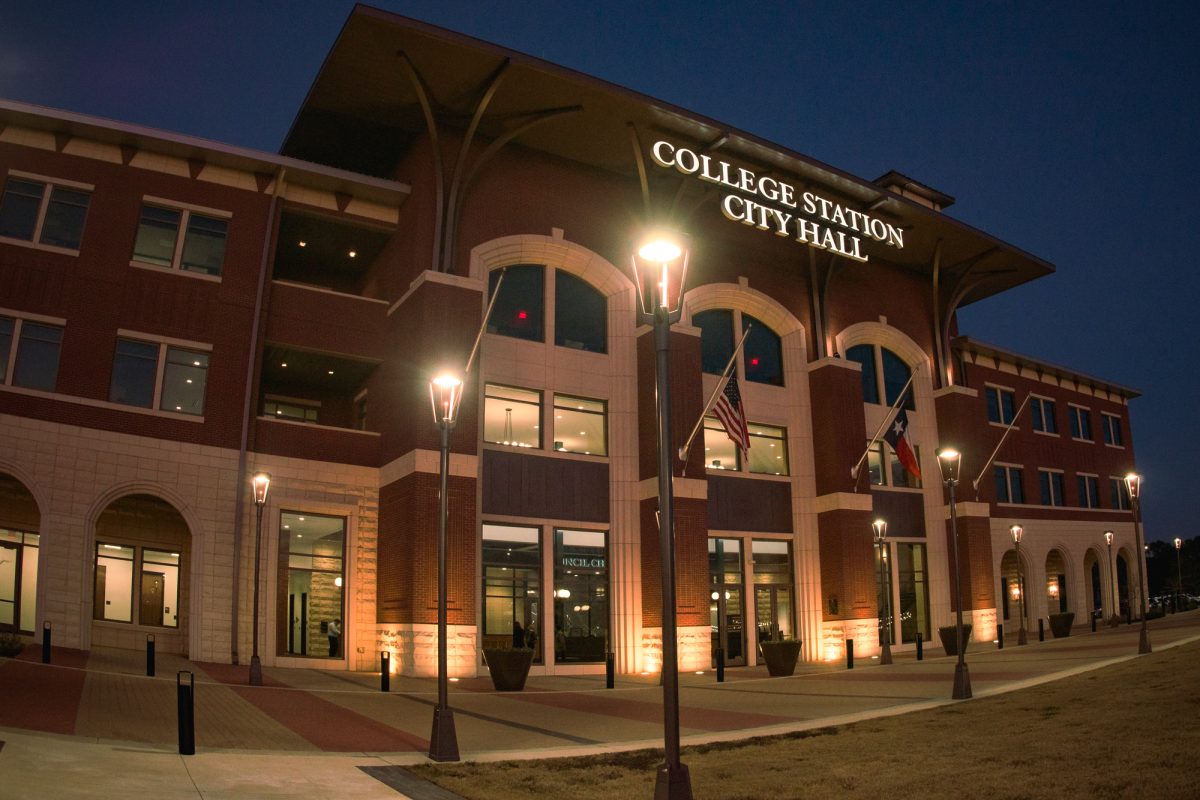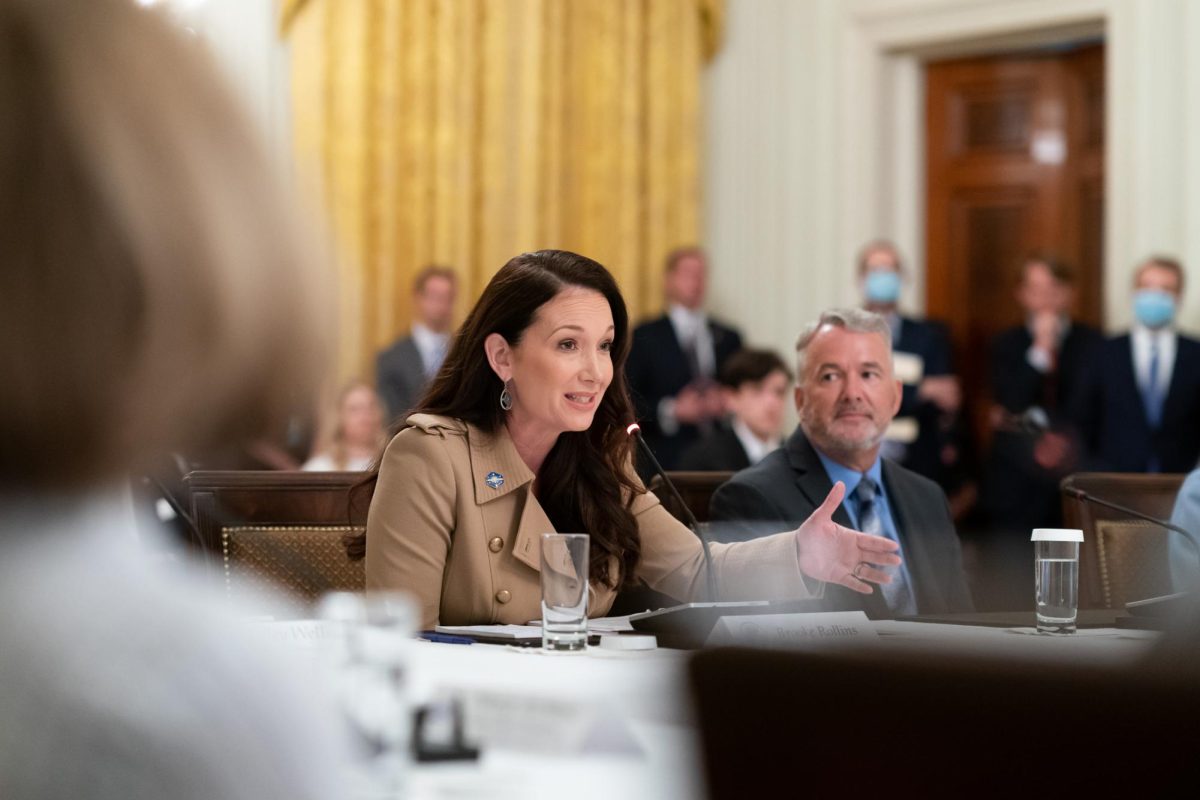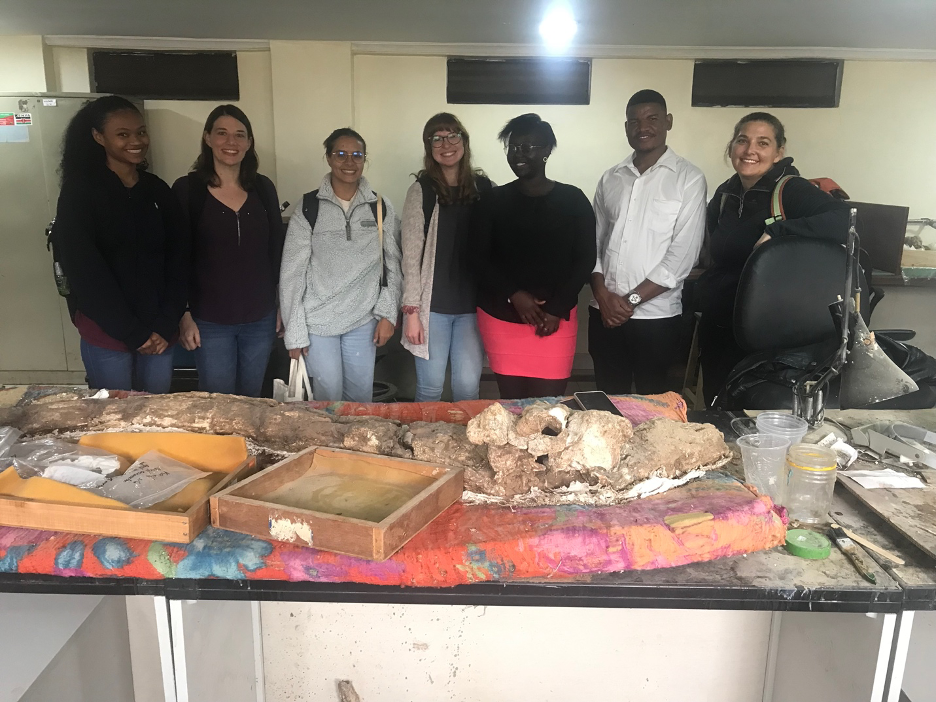The 2025 Texas A&M student body president and vice president debate took place Thursday night where candidates presented their platforms for the next year.
Hosted by the Student Government Association and proctored by business freshman Isabella Manke, the debate consisted of three rounds of questions for presidential candidates followed by one round of questions for vice presidential candidates.
Opening Statements
To start off, each candidate gave an opening statement to introduce themselves, share their history and explain why they chose to run for student body president.
Senior Colton Whisenant
He is the current junior class president, a member of the Corps and involved in Greek life. He said his family ties to A&M and experience serving the student body are his motivators for running.
“I’ve bled maroon ever since the day I was born,” Whisenant said. “I have had a real privilege to serve the students around me, and I’ve seen the real impact that student government can make on people’s lives.”
Junior Brandon Beller
Beller opened by expressing his excitement to share his intentions as president and for the opportunity to run.
“I’m super excited to be here, and I’m glad to be able to share a little bit more about what I care about,” Beller said. “And I’m excited to share it with the student body.”
Junior Carter Mallory
Mallory began by saying that two of his priorities as president would be education affordability and encouraging a campus culture of serving others.
“No. 1 is taking care of some basic needs for our students,” Mallory said.
Junior Riley Pritzlaff
He said the student government falls short in engagement with the student body. To better represent students, he said, they must increase their presence on campus.
“I firmly believe that student government should represent students,” Pritzlaff said. “It should fight for students to get things done. Student government is an organization that is of, by and for Aggies.”
What is one area that you believe students at Texas A&M are not being aptly represented or educated in and how would you take steps to rectify that situation?
Whisenant said one of his passions is serving students with disabilities, a group he feels is underrepresented. Whisenant said he helped bring a $2.4 million testing center to West Campus in the past year, which is currently under construction.
“We’ve had major problems with different parts on campus,” Whisenant said. “I had a friend the other day that got stuck on a wheelchair elevator outside the Quad for two hours in the rain. That is not something that should be happening at a university with 70,000 students.”
Beller answered by saying that although student government has represented underrepresented groups well, he feels that some are often shone in a negative light, namely Interfraternity Conference, or IFC, fraternities on campus. Beller said he plans to change the culture around IFC fraternities by celebrating their wins with them and getting them involved in leadership.
“People don’t hear about the $1.6 million that Greek life raised in the past year,” Beller said. “ … Those are not things that are coming up in conversation, and that’s not because they aren’t happening or being advertised by IFC themselves. These things aren’t being publicized because no one else is celebrating their wins for them.”
Mallory reinforced his belief that students haven’t had a say in education affordability, and he plans to use student government to give students better access to administration to voice their concerns.
“One of the things I would love to see more of is students having access to university administration by means of student government, rather than the Student Government Association taking their own desires up to university administration without vast input from the student body,” Mallory said.
Pritzlaff said he agrees that student engagement is a big problem. His solution would be creating a student engagement task force that would bring stakeholders and students into the fold by hearing their concerns, accomplishments and priorities.
“SGA’s biggest problem right now is this thing called ‘the bubble,’” Pritzlaff said. “To bring in stakeholders from all over our campus, to hear their different perspectives, to make a difference and actually fight for the things people care about, that’s what we need to do.”
Some argue that Texas A&M holds on too tightly to tradition, while others believe we are losing our Core Values. How do you balance tradition with progress while making sure every Aggie’s voice is heard?
Whisenant said traditions are what makes A&M so unique and that progress lies in ensuring those customs reach every student. While he feels that A&M is an inclusive university, he said there needs to be more encouragement for underrepresented groups to get involved with traditions like Silver Taps and Muster.
“I’m in the Corps,” Whisenant said. “We’re always there, but what the Corps wants more than anything is for everybody to be there.”
Beller believes A&M’s traditions can best benefit the university by focusing on the relationships and leadership of tradition-centered organizations to get more students involved. He went on to say that one area of change he plans to focus on is convenience and accessibility for students, specifically by helping students get more access to advisors and supporting engineering majors.
“We can’t advertise a four-year degree and then not follow through on that,” Beller said. “At the end of the day, students and the relationships those students are exposed to are the most important thing about the Aggie experience.”
Mallory feels that traditions embody the A&M’s Core Values and hold the Aggie family together. Silver Taps is one example of the positivity A&M’s traditions can bring, he said.
“There is a significant opportunity to improve what we already have on this campus, but I don’t believe the traditions of this campus hold us back in any way,” Mallory said.
Pritzlaff said that while A&M’s ability to hold onto traditions for over 100 years is inspiring, there has also been and continues to be change on campus, using the West Campus and Northgate developments as examples.
“There’s changes that are happening now that we need students to have a voice in, that are going to affect Aggies for years to come,” Pritzlaff said.
Texas A&M works closely with the government, donors, faculty and administration, all of whom affect its reputation and resources. If these groups disagree on an issue, how would you handle the situation while advocating for the student body?
Whisenant said it’s all about relationships and finding common ground on friction points between different groups. He said all stakeholders ultimately want to help people, so focusing on student opinion and communication is key.
“The way that you change somebody’s perspective on things is explaining the ‘why,’” Whisenant said. “If I go talk to a governmental representative, it’s not about attacking them and telling them what they’re doing is wrong. It’s about explaining why what you’re talking about is the best way to help a student.”
Beller said the focus is always the students and that while the student government has notable achievements, the group fails to communicate its progress effectively to the student body. He said President Mark A. Welsh III has been a great example of someone who keeps the student body engaged and informed.
“People don’t know that student government is doing those things because it’s not communicated on the tail end, and because of that, we’ve seen a lack of trust by the general student body towards student government,” Beller said.
Mallory said his experience has shown him that by keeping the focus on students and understanding everyone’s perspective, disagreements can easily be settled.
“In polite conversation, we’re able to realize the needs of the student body while also recognizing the limitations of the university administration on certain issues where students feel they might not be represented well or treated fairly,” Mallory said.
Pritzlaff said the most important thing is to focus on the students and communicate what the students want and care about.
“There’s a lot of different stakeholders that come to the table with a lot of different perspectives,” Pritzlaff said. “Students are one of those. It begins and ends with students. That’s, at the end of the day, who we represent.”
Vice President Candidates: One of your primary goals is assisting the student body president in building a cabinet. How can you ensure that a cabinet is built on merit and not personal connections while building a diverse team with similar goals?
Senior Brock Barrington, Whisenant’s running mate.
Barrington said building a cabinet is a balance between relationships and merit. He said he would reach out to his network and look for people most qualified for cabinet positions.
“I’m a relational guy, and I do think relationships come first,” Barrington said. “But merit is also important. All the Aggie Core Values, Respect, Excellence, Loyalty, Leadership, Integrity and Selfless Service, those are all things we need to consider when we consider a cabinet position.”
Senior Gia Viggiano, Beller’s running mate.
Viggiano said she had experience in helping build a cabinet this past year, where she focused on relationships but prioritized A&M’s culture and community. She said improving student government’s outreach will broaden the candidate pool for cabinet members and offer better representation across all areas on campus.
“Increasing outreach is a critical part of building a cabinet, and I don’t think anyone should be disqualified just because of their lack of experience with SGA,” Viggiano said. “It’s their involvement on campus and their involvement of being an Aggie that qualifies them.”
Junior Kathleen Parks, Mallory’s running mate.
Parks similarly said she has two years of experience building cabinets, where she has placed merit over relationships.
“There’s a lot of good people who want to serve and a lot of people who are willing, but ultimately, it’s about who can do the job best and who has the biggest heart,” Parks said.
Junior Ezra Villarreal, Pritzlaff’s running mate, was not in attendance.
Voting begins Thursday, Feb. 27, at 9:00 a.m. and closes Friday, Feb. 28, at noon. Students can vote at vote.tamu.edu. Results will be announced at 7:00 p.m. on Friday following a celebration in Aggie Park from 5:00 p.m. to 7:00 p.m. that is open to all students.




